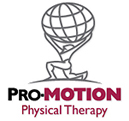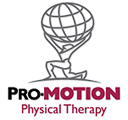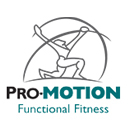FROM THE PROMOPT BLOG

If we take a step back and observe our world, it is easy to see problems. While we may disagree about the extent of a given problem, we all can certainly find issues with the way things are, no matter our race, creed, or political affiliation.
Problems are often examined in a linear fashion. What we mean is that A and B interact to cause C. If this is the case, then the approach to solving the problem progresses by altering A and then B therefore effecting C. In the real world problems are not linear but circular. A, B, and C all have an effect on the other.
Lets take a look at systems. When you look at things this way you see that systems consist of three kinds of things: elements, interconnections, and a function or purpose. For instance, the digestive system is made up of elements: teeth, mouth, esophagus, stomach, enzymes and the intestines. It is not a digestive SYSTEM without the parts, but it is impossible to understand the parts if we don’t appreciate how they interact to become the system that breaks down food so that we can benefit from the nutrients trapped inside.
A system is an interconnected set of elements that is coherently organized in a way that achieves something. A system is more than the sum of its parts. Keeping purposes in harmony is an essential function of successful systems.
No matter the problem, the systems behind issues create a complex web. Solving any of these problems requires more than a simple Band-Aid.
Consider poverty as an example. In the developing world, poverty is a large issue. The fact that some people in the world spend each waking moment looking for food is disheartening. At the surface, one would think the answer to poverty is money and the answer to famine is food. But to act in such a way denies the system that helped develop a poverty state.
A famous proverb rings true in an example like this: “Give a man a fish and he eats for a day; teach a man to fish and he eats for a lifetime.”
If a person donates money or food to a person in need, she might meet immediate satisfaction, and the person in need has a short term solution to their problem, but what about tomorrow? The donation addresses an interconnection (food or the money to buy some), but does nothing in relation to the elements that make up the reasons behind the persons present status, nor does she enhance the purpose or function necessary to eat daily …the fishing if you will.
For this reason, people who consider poverty within the broader system might approach the issue differently. A popular solution within systems thinking is to address poverty through micro-loans — the ability to lend a small amount of money to someone in need so she might begin a small business. The business is an interconnection that leads to money, which leads to the ability to purchase food consistently.
A Body System
Just as the problem of poverty exists within a broader economic system, so too does your fitness exist within a system — your body.
For any given motion you wish to complete, your body system engages in a wide variety of processes to achieve your desired goal. If you want to increase strength, you must consider the full system when creating a regimen to strengthen your body.
Working on a bench press might alleviate the immediate desires of stronger arms, but is that specific workout addressing the entire system?
Dietrich Bonhoeffer once said, “Your path will tie you into a knot and constrain your growth or weave you in to something larger like a river carried by the surprise of its own unfolding. Choose wisely. If you board the wrong train, it is no use running along the corridor in the other direction.”
The goal of the human body as a system is to integrate, that is to move toward harmony of all parts working toward the accomplishment of the whole. Integration can be seen as a natural push toward health. Every system is made of elements (the bones, muscles, nerves etc.), interconnections, and purpose or function.
Your fitness decisions must be made with the whole system in mind. Without that overarching view, it’s possible to take a path down the wrong river or board the wrong train. The immediate direction might have seemed correct but you didn’t read the map to understand the ultimate destination.
Purpose and Systems
For this reason, purpose is an important part of functional fitness. Knowing what you desire to achieve is the first key. Knowing why you do what you do grounds you and allows you to chart your direction. If you want to gain strength because you have trouble lifting boxes at work, your exercises ought to be fashioned with the specific muscles and body movements required to lift boxes. This is a much more systematic approach and one that feeds the interconnections your body has developed. In this way connection is made between the elements of the body that allow you to lift and the task of lifting.
Much like addressing the immediate need of poverty without consider the long-term purpose, your workouts have the potential of addressing immediate needs while creating longer-term issues.
If you recognize that your body is a connected system, it will help you select the proper regimen to “teach it to fish” rather than “giving it a fish.” Even more, if you know the purpose behind your activity, you can direct a workout that addresses the full system of your body in the long-term.
Where are you going? What do you want to achieve? How can your body system work toward your goals? If you want to become your vision, you have to Be Connected!







